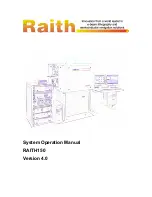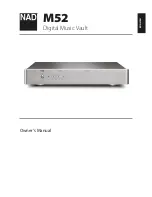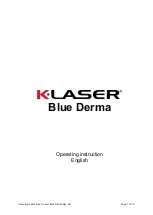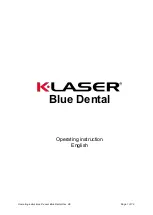
Armfield Instruction Manual
14
Choice of Granular Material for the Sand Tank
It has been found through experimentation that well-graded silica sand in the range
16/30 mesh (1000 micron to 500 micron) will allow all of the experiments described in
the teaching manual to be carried out without the need to change the sand between
runs. To minimise the cost of filling the tank it is suggested that 16/30 mesh
swimming pool silica filter grit be used. 550 kg of sand will be required to fill the tank.
Obviously the size and grading of the sand used in the catchment tank can be varied
to meet the particular needs of the experimenter. Fine sand will normally give a lower
coefficient of permeability and hence slower run-off and steeper water table slopes
than a coarse one.
Before loading any sand into the sand tank it is most important that the sand should
be first thoroughly washed to remove all silt and salts present. After filling with sand
it is suggested that the water is circulated via the French drains for a period of
approximately one hour then drained from the sump tank and re-filled with clean
water (See
Commissioning
section).
Note:
It is important that the granular material used in the sand tank is free from fine
sediment as this will gradually block the filter material used on the French drains, the
two wells, the tappings to the manometer tubes and the filters in the pressure
regulators. The use of sand taken directly from a beach or quarry is not
recommended. If this is necessary then the sand must be given multiple washes with
intermediate drying on trays to eliminate the soluble salts etc. The sand should also
be graded using sieves to remove those fractions smaller than 500 microns and
larger than 1000 microns.
Accessories
The S12-MkII is supplied complete with the following accessories:
Tank Sealing Plate: Sometimes it is required to seal the end of the sand tank (e.g. for
groundwater flow demonstrations where leakage through the stop-log weir is
unacceptable). When this is the case, the rectangular plate supplied should be bolted
over the cut-out (31) in place of the weir chute/diffuser (26).
Scraper: When the sand tank has been filled with sand, the surface profile for the
various experiments can be formed using the scraper. One edge has square corners
to create sharp features and the other edge has rounded corners to prevent digging-
in or create softer features.
Sand Scoop: Having created the general surface profile using the scraper, any local
features or channels can be created using the small plastic scoop.
Anti-erosion Mat: This small section of mesh is buried just beneath the surface of the
sand adjacent to the outlet of the river inlet tank to reduce any local scour where the
water enters the sand tank.
S12-MODELS (Optional accessory): The range of experiments using this equipment
is endless and specific models can be fabricated by the user as required. However, a
set of basic models is available as on option to facilitate the various experiments
listed in the teaching manual. Refer to the Laboratory Teaching Exercises for details
on using the models. The following models are supplied with the S12-MODELS
option:
Содержание S12-MKII
Страница 1: ...Advanced Environmental Hydrology System Instruction Manual S12 MKII ISSUE 21 February 2014...
Страница 4: ......
Страница 8: ...4 Equipment Diagrams Figure 1 Front View of S12 MKII Hydrology System...
Страница 9: ...Equipment Diagrams 5 Figure 2 Plan View of S12 MKII Hydrology System...
Страница 10: ...Armfield Instruction Manual 6 Figure 3 End View of S12 MKII Hydrology System...
















































